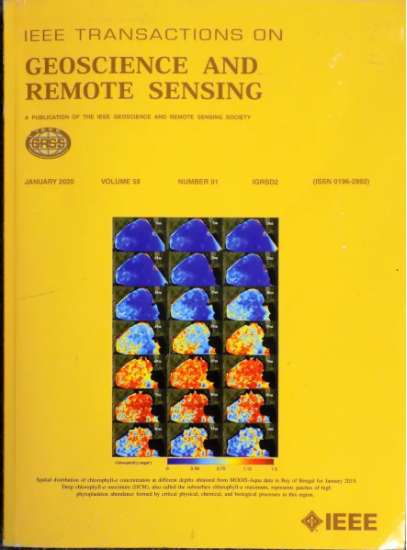月球亮度温度数据近似的球面几何b样条模型
IF 7.5
1区 地球科学
Q1 ENGINEERING, ELECTRICAL & ELECTRONIC
IEEE Transactions on Geoscience and Remote Sensing
Pub Date : 2025-04-15
DOI:10.1109/TGRS.2025.3560865
引用次数: 0
摘要
中国嫦娥2号微波辐射计(MRM)的亮度温度(TB)数据受原始数据量的限制,无法表达全球TB分布。为了利用CE-2机载MRM获取的TB数据构建月球TB模型,提出了一种球面几何b样条(sgb样条)模型。该模型将TB观测数据与月球几何特征充分结合,通过细分优化过程确定最优拟合参数。更具体地说,月球结核模型的建立首先采用球面面积坐标(SACs)在所有四个频率通道上表示CE-2结核数据,然后应用几何b样条来改进结核分布。同时,它保留了月球的几何完整性。我们发现sgb样条模型在三维欧几里得空间中构建了更全面的月球白天和夜间TB模型,更详细地表达了球面空间信息和频率通道的影响。实验结果表明,所提出的sgb样条模型明显优于代表性的插值方法。本文章由计算机程序翻译,如有差异,请以英文原文为准。
A Spherical Geometric B-Spline Model for Lunar Brightness Temperature Data Approximation
Brightness temperature (TB) data from the Chinese Chang’E-2 (CE-2) microwave radiometer (MRM) are constrained by the limited quantity of the original dataset, which cannot express global TB distribution. To construct the lunar TB model with the TB data obtained by the MRM onboard CE-2, we propose a novel spherical geometric B-spline (SGB-spline) model. The model fully integrates the observed TB data with the lunar geometric features and determines optimal fitting parameters through a subdivision-based optimization process. More specifically, the establishment of the lunar TB model begins by employing spherical area coordinates (SACs) for CE-2 TB data representation across all four frequency channels, followed by applying geometric B-splines to refine the TB distribution. At the same time, it preserves the geometric integrity of the Moon. We observed that the SGB-spline model constructs the more comprehensive TB models during both lunar daytime and nighttime in the 3-D Euclidean space, providing a more detailed representation of the spherical spatial information and the effect of frequency channels. Experimental results demonstrated that the proposed SGB-spline model significantly outperforms representative interpolation approaches.
求助全文
通过发布文献求助,成功后即可免费获取论文全文。
去求助
来源期刊

IEEE Transactions on Geoscience and Remote Sensing
工程技术-地球化学与地球物理
CiteScore
11.50
自引率
28.00%
发文量
1912
审稿时长
4.0 months
期刊介绍:
IEEE Transactions on Geoscience and Remote Sensing (TGRS) is a monthly publication that focuses on the theory, concepts, and techniques of science and engineering as applied to sensing the land, oceans, atmosphere, and space; and the processing, interpretation, and dissemination of this information.
 求助内容:
求助内容: 应助结果提醒方式:
应助结果提醒方式:


